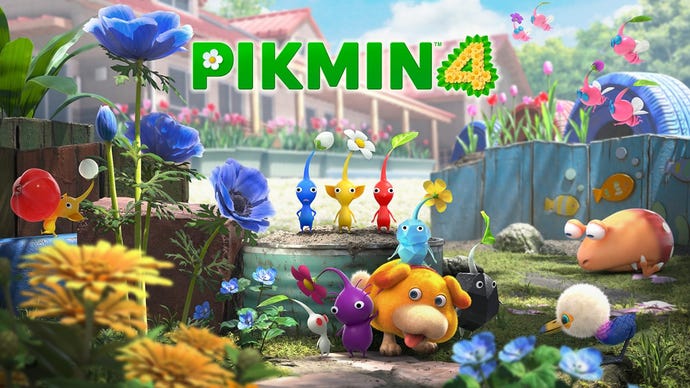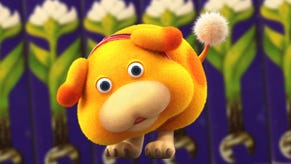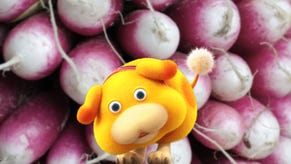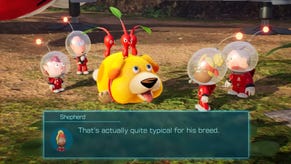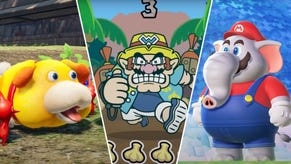Pikmin 4 review: charming, well-rounded, cosy - and the best in the series
With a canny split in two, Pikmin 4 is perfectly placed as an entry point for newcomers and a quality sequel for hardcore fans.
When you think about tentpole sequels to major Nintendo franchises, the mind doesn’t naturally jump to the iterative. More often than not, Nintendo wants to do something wild and new with each new main entry in any of its core franchises - and this is exactly the sort of thing that has historically stood in the way of things like Star Fox and F-Zero getting regular sequels. But Pikmin 4 is a shining example of what the company’s talented developers can do by taking a step back, simply analyzing and improving what already exists.
This is ultimately what Pikmin 4 is. Nintendo has been at great pains during the game’s promotional cycle to push the concept that this is an ideal entry point for newcomers to the series. Often when developers say this, it’s with their fingers crossed behind their backs - but for Pikmin 4, it’s true. This has everything you’d want from the earlier games, presented from a slightly tweaked angle that makes the entire package more palatable and approachable for a whole new audience.
Accessibility is probably the most important aspect of Pikmin 4 that’s significantly different from the previous three entries in the series. Certain traditions have been abolished completely, like over-arching time limits. Players can now rewind their progress and undo disastrous Pikmin bloodbaths. Controls have been slightly tweaked, and the general feeling of the game is… breezier. At least, in the main story.
A lot of the content hardcore Pikmin fans are used to is still present - though in many cases you’ll need to play through that first fifteen or so hours in order to unlock the real meat of the package.
The core of the game will be familiar to even those with only a passing knowledge of the series, however. You’ll guide your tiny adventurer, this time player-created, across familiar real-world environments. Pikmin 4 even gives us a glimpse at Pikmin inside a human residence. Day-by-day, you must marshall your Pikmin to gather resources and forge new paths through the world.
.png?width=690&quality=70&format=jpg&auto=webp)
Nintendo has been clear they don’t want us to spoil any surprises, but this plays out pretty much how you’d expect. Pikmin 4 gently eases players green and veteran alike into its experience… and then, after an initial story that practically forms an extended but also very satisfying tutorial, the gloves come off. And, to some degree, the knuckle-dusters are put on.
The first half of Pikmin 4 feels like a complete game in itself - breezy, cozy, a lovely experience you can sit back and enjoy with relatively little stress. At its conclusion, you’ll feel satisfied and the credits will roll. But then there is more. The second half also practically feels like a discrete game in itself - except it’s the hardcore sequel that the most dedicated fans of the first three titles wanted. In this sense, it truly is a ‘game of two halves’.
This isn’t to say that the game simply hits you with more complexity, of course. Mechanics layer themselves out over time - upgrades, new abilities, and of course the unlocking of new variations of Pikmin. The complexity is spread, and the way mechanics are introduced is the very definition of a smooth, well-designed difficulty curve. A curve is not always even - it can start gentle and increase in intensity, like a rollercoaster building to ever-bigger loops - and Pikmin 4 achieves this, saving its most intense wrinkles for the late game.

Some changes are present from the start, most notably Oatchi - a new canine companion. Oatchi basically functions as your custom-created protagonist’s second in command. He can be used like a Pikmin to interact with the environment directly on command, but can also assume command of a separate group of Pikmin and head off to other areas of the map alone, either under your direct control or stewarded by an AI.
Exactly how you use Oatchi is largely left up to the player, with mission design structured such that any of the above approaches is mostly applicable to any given mission or exploration - which itself feels like a nice nod to the differing ways in which Pikmin 1-3 each played. All three styles of play (solo, split-protagonists, and RTS-esque micromanagement) are valid here - or more likely, a new combination of the three.
Oatchi is the poster child of a game that is just jam-packed with smart additions and changes. For me, so too is the rewind - a mechanic I would’ve turned my nose up at on paper (that’s cheating, I’d protest) but found tremendously useful and interesting in practice. The rewind also becomes more vital than I ever could’ve imagined as the game ramps up the difficulty - as it lets you experiment its most devilish challenges without having to engage in a soul-crushing grind to get more Pikmin. This feeling that the additions are better in reality than on paper is in fact the case for much of the game - like Ice Pikmin, which sound like a relatively boring elemental addition until you experience the use cases for turning liquids solid in this little-big world.

Honestly, it’s a difficult package to criticize too fiercely. I found the nighttime levels relatively uninspiring, for instance - but they form only a tiny part of the package. Some will likely miss some of the past multiplayer options - but many won’t at all. For some fans the gentle early game and the very gradual pace at which reused enemies and mechanics from past titles are introduced will doubtless be frustrating. I felt it too, in fact - but I also understood, the deeper I got, that this pacing was vital to the mood and vibe Pikmin 4 was striving for.
That mood is one that brings together both established and new ideas to create a Pikmin that is, I think, absolutely the most well-rounded title in the series. It takes a series that for its second and third entries I appreciated but didn’t love - and brings back that adoration. It’s a revitalizing sequel - though also exactly the sort of entry that’ll be difficult to follow.
